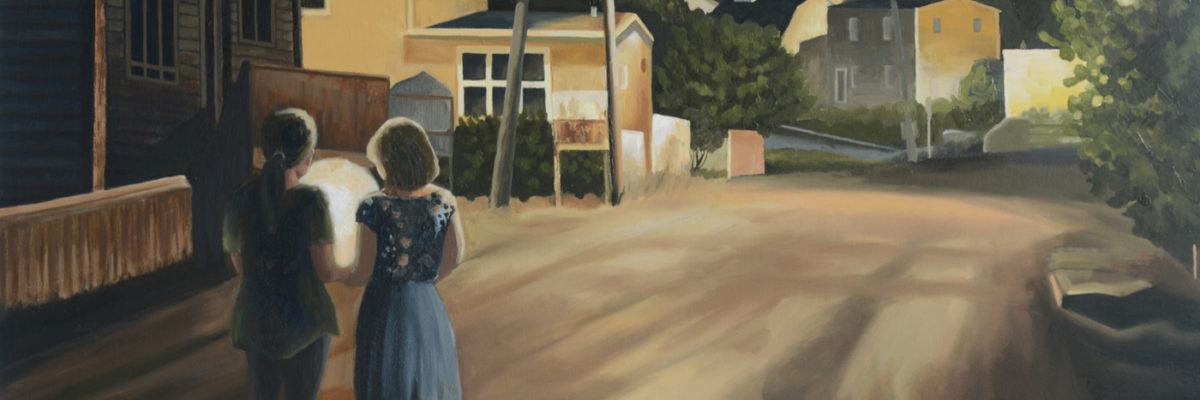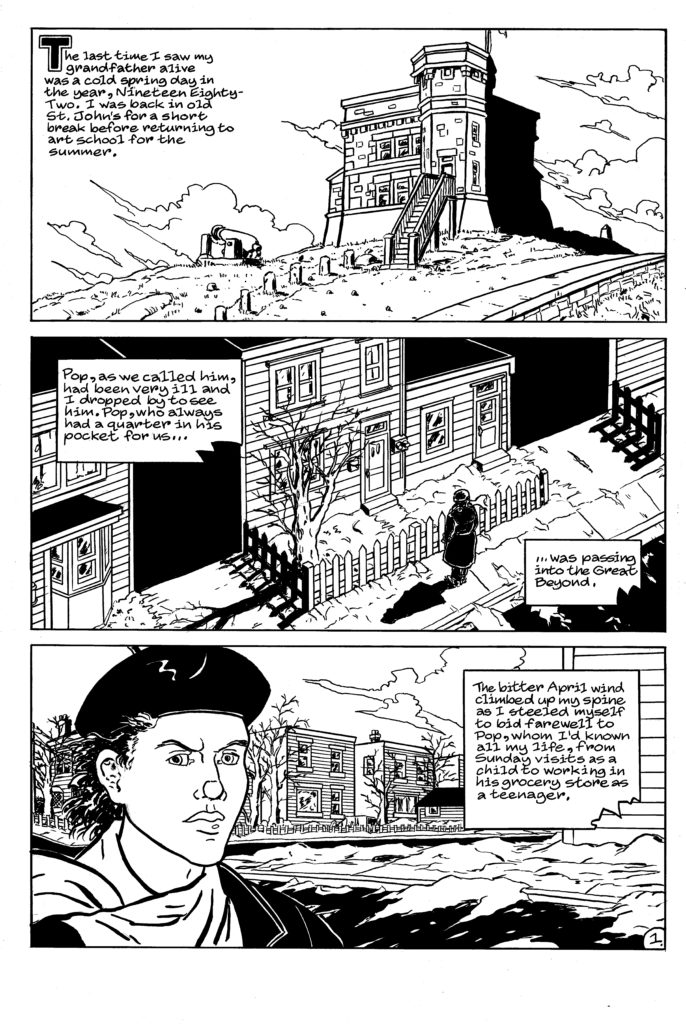Ginok Song: Fragments
BY NQ
August 2019
Fragments, Ginok Song’s inaugural solo exhibition at the Christina Parker Gallery, is a new series of oil and canvas paintings. NQ joined the artist to discuss her latest body of work.
“I’ve been working on them the past year and a half. They are based on my research in graduate school; I studied women’s representation in magic realism. This is a visual representation of what I studied.”
The paintings’ realism is grounded in their composition – figurative, in recognizable settings, like Petty Harbour – as is their magic – a hazy dreaminess, the unsettling placement of objects or animals, like a harnessed lamb. They are also quite personal, as the artist used her own life’s events, sieved through memories, to build the show around “the bits and pieces of women’s experience, so I could make some patterns from that.”
To Song, magic realism is an ambiance or attitude as opposed to an art movement, albeit one closely associated with van Dyck and other Flemish and French painters, as well a coterie of artists in the Weimar Republic (1922-1933). Closer to home she cites Alex Colville, Christopher Pratt, and Mary Pratt. “Magic realism is realism, but not just describing reality but going on to create some abstract ideal or value.” Edward Hopper’s paintings, for example “form a shell of a reality around a core of abstraction.”
Her palette reinforces the naturalism. “Those are warm tones.” And the light is “sort of evening, kind of dusk.” She tries to diffuse illumination throughout the painting, instead of letting it spill from a single source. (And by observing this with her own eyes she also challenges the traditional European female-in-a-male-gaze perspective.)
She likes to put in the hours. “In the morning I get up and try to move my body before I get into the studio. I’m in the studio by twelve o’clock until 5pm, and then after supper I go back from 7pm to 11pm. That’s my usual routine. Before 2017, I was in school for three years, and doing some big work contracts, and didn’t have a consistent work routine in the studio, I didn’t have that. But last year and this year I had that. So I really enjoyed it. I tried to make my life to be in the studio.”
She also prefers to have “three, four paintings on the go. When I’m working on a piece, I don’t have a perfect finished image in my head. Even when I have photos, I’m using them as a reference, I am not looking at them, I am looking at the canvas. Also, I like the labour of the working on the canvas. Sometimes I am combining different elements, I put different colours and it’s not working out, sometimes the lighting is not working, you know? I like the combination of different elements as I am working on the canvas, and figuring out, and it slowly becomes. I love that process.”
Which she’ll continue to apply on her new projects. “For the future I am interested in identities, women’s representation, gender ambiguity.”
And she adheres to a potent guide. “I was conceptually most influenced by Mary Pratt, how in her representation of her things she has agency as a woman. In the way her works, like her portraits of food, show a woman’s way, in her particular way, her way of seeing as a woman. So hopefully I could do something like that, in my particular way.”
Ginok Song is a Korean-Canadian visual artist. She grew up in the city of Pusan, South Korea, and in 1998 earned her BFA in painting at the university there (and later an MPhil from MUN). Fragments continues until August 31. The works can be viewed at https://christinaparkergallery.com/exhibition/ginok-song/




